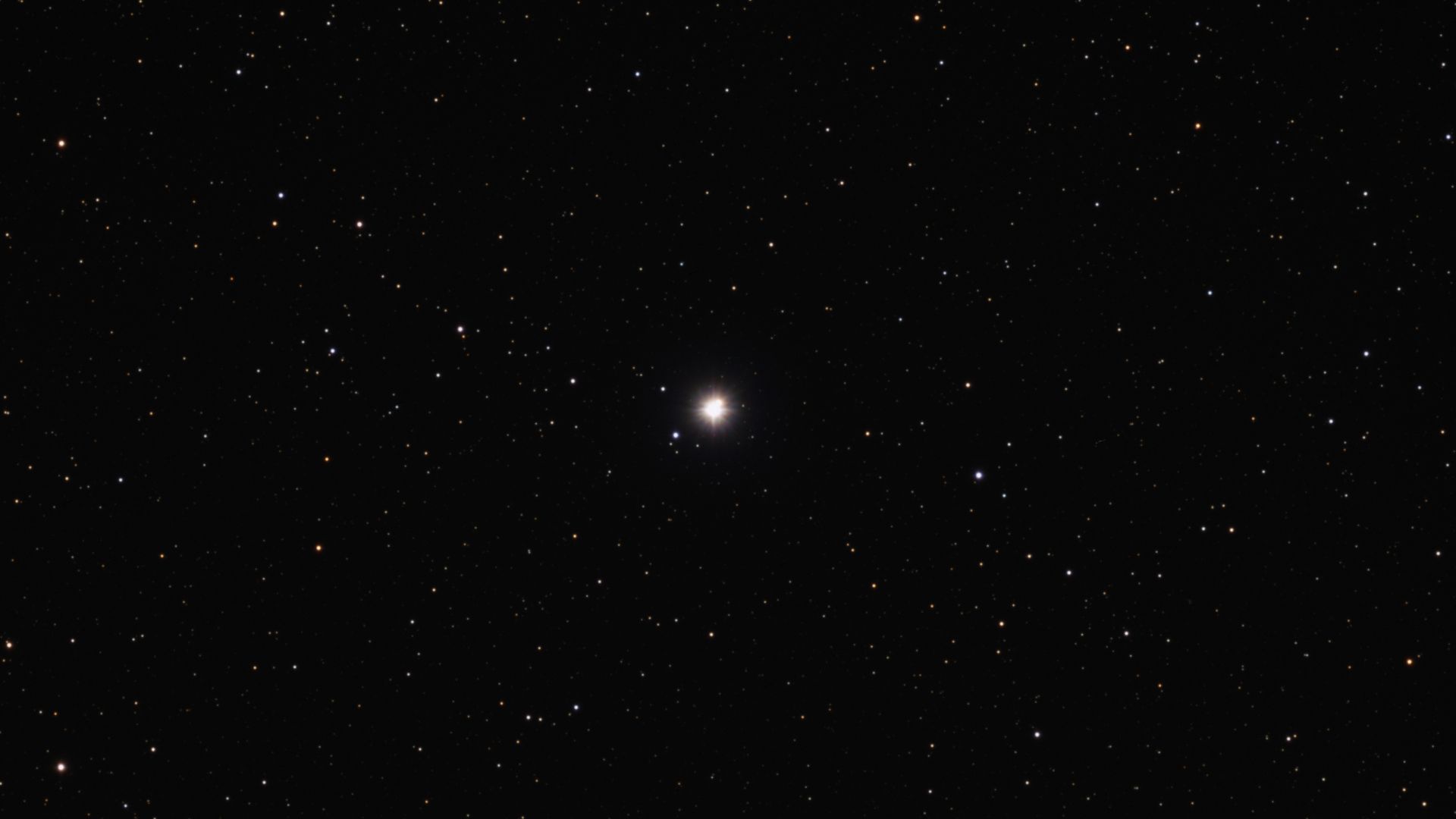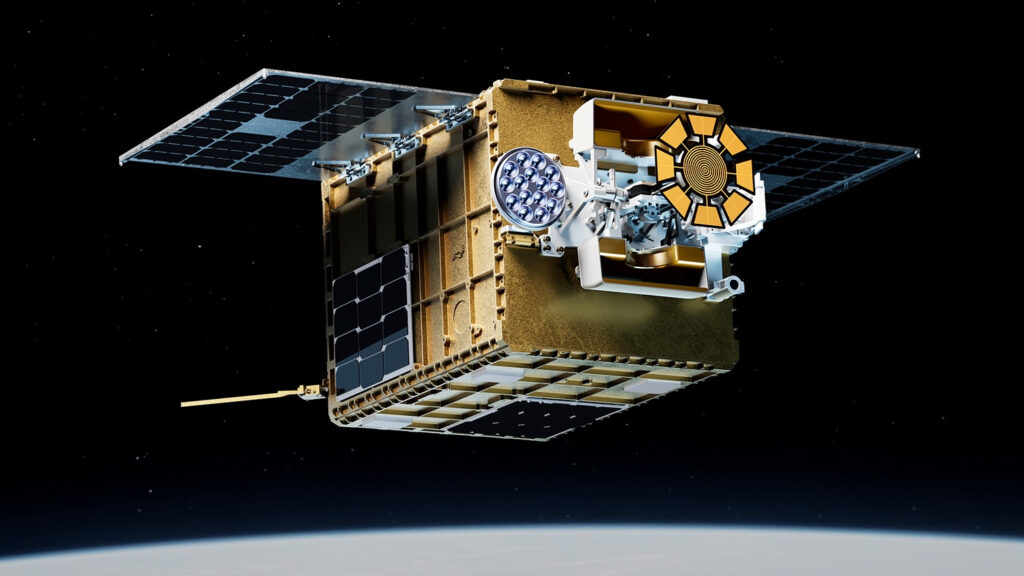Now Reading: Scientists want to search for life in this double star system devoid of giant exoplanets. Here’s why
-
01
Scientists want to search for life in this double star system devoid of giant exoplanets. Here’s why
Scientists want to search for life in this double star system devoid of giant exoplanets. Here’s why


A nearby binary star system is bereft of giant planets, but scientists think it may still be a decent place to look for life.
Binary star system Eta Cassiopeiae, located just 19 light-years away, could be a good target in the search for habitable exoplanets, according to a recent study. University of California, Riverside astronomer Stephen Kane and his colleagues simulated the orbital dynamics of the star system and concluded that it’s not home to any giant planets – or any planets farther than 8 astronomical units (8 times Earth’s distance from the Sun) away from its main star.
An empty planetary neighborhood
From Earth, Eta Cassiopeiae looks like a bright point of light in the night sky, but it’s really two stars locked together in an endless orbital waltz, circling a shared center of gravity once every 472 years. The larger of the pair is a G-type star just a smidgen more massive than our sun, and its smaller partner is a K-type star which weighs in at just 57% of our sun’s mass.
Recently, the European Space Agency’s Gaia mission provided astronomers with much more precise measurements of the two stars’ masses and orbits. Kane and his colleagues used that data, along with new observations from a high-resolution spectrometer at the Keck Observatory, to build computer simulations of the star system.
It turns out that the outer reaches of the star system are probably pretty empty. The team of astronomers simulated the orbits of hypothetical planets orbiting Eta Cassiopeiae A, the larger of the two stars, and they found that planets orbiting farther than 8 astronomical units away were just too vulnerable to getting pushed and pulled around by Eta Cassiopeiae B – and ending up in wildly unstable orbits. All of those simulated outer worlds got kicked out of the star system to begin new lives as rogue planets, leaving the outer reaches of the Eta Cas system eerily vacant.
“Inside of 8 AU, the situation is more complicated,” wrote Kane and his colleagues in their recent paper.
The enormous mass of Eta Cassiopeiae B makes itself felt even close to the larger star; some of the simulated planets got nudged into long, narrow eccentric orbits even when they started in about the same position as Mars. But despite that, most of the planets in the larger star’s habitable zone ended up on stable orbits (even if some of those orbits were eccentric ones, which might have caused some wild seasonal swings on the planets’ surfaces). That raises the intriguing possibility that the real Eta Cassiopeiae A might have some Earth-sized worlds orbiting in its habitable zone.
Kane and his colleagues say it’s definitely worth a look with future telescopes like the European Southern Observatory’s Extremely Large Telescope. As we speak, astronomers are working to pinpoint — and rule out — star systems where newer, bigger telescopes might capture direct images of potentially habitable worlds. Eta Cassiopeiae might be one of those star systems, if Kane and his colleagues are right.
Complicated, But not impossible
One of the things that makes Eta Cassiopeiae so interesting for future exoplanet searches is that, according to Kane and his colleagues’ recent study, the system has no giant planets at all: no alien versions of Uranus or Neptune on the outskirts of the system, and no hot Jupiters whizzing dangerously close to the main star, either. In their simulations, Kane and his colleagues modeled whether today’s telescopes could detect giant planets, orbiting Eta Cassiopeiae A at various distances, using the radial velocity method. (Radial velocity looks for slight wobbles in a star that reveal the gravitational pull of an orbiting planet.)
If any giant planets orbited Eta Cassiopeiae A within about 8 AU, astronomers could spot their telltale signature in the spectrum of light from the star. And since no planets at all can survive the binary star system’s constantly-shifting gravity beyond 8 AU, the system must be totally giantless.
That may actually be good news for life, or at least for the presence of planets in the habitable zone around Eta Cassiopeiae A. If there were giant planets orbiting the larger star, their orbits would be as eccentric as those of comets in our own solar system – and having a gas giant swooping through the inner star system every few decades or centuries would be a nightmare for rocky little worlds just trying to stay in their orbital lanes. It would, in Kane and his colleagues’ words, “effectively eliminate these systems as viable search targets for habitable zone terrestrial planets.”
There’s no guarantee that Eta Cassiopeiae is home to any potentially habitable planets, or even any planets at all, but Kane and his colleagues’ recent study suggests it could be worth a look.
Kane and his colleagues published their work in October in The Astronomical Journal.
Stay Informed With the Latest & Most Important News
Previous Post
Next Post
-
 012024 in Review: Highlights from NASA in Silicon Valley
012024 in Review: Highlights from NASA in Silicon Valley -
 02Panasonic Leica Summilux DG 15mm f/1.7 ASPH review
02Panasonic Leica Summilux DG 15mm f/1.7 ASPH review -
 03From Polymerization-Enabled Folding and Assembly to Chemical Evolution: Key Processes for Emergence of Functional Polymers in the Origin of Life
03From Polymerization-Enabled Folding and Assembly to Chemical Evolution: Key Processes for Emergence of Functional Polymers in the Origin of Life -
 04How New NASA, India Earth Satellite NISAR Will See Earth
04How New NASA, India Earth Satellite NISAR Will See Earth -
 05And Thus Begins A New Year For Life On Earth
05And Thus Begins A New Year For Life On Earth -
 06Astronomy Activation Ambassadors: A New Era
06Astronomy Activation Ambassadors: A New Era -
07SpaceX launch surge helps set new global launch record in 2024




















